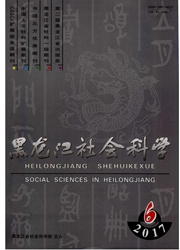

 中文摘要:
中文摘要:
利用协整检验和格兰杰因果检验对1994-2010年我国农村居民国内旅游消费与收入水平之间关系的实证研究结果表明,农村居民人均国内旅游消费与人均GDP之间存在长期稳定的均衡关系,人均GDP每增加1个百分点,人均国内旅游消费便增加约1_3个百分点。格兰杰因果检验表明,滞后1期和滞后2期,均不存在LNRT到LNRGDP或LNRGDP到LNRT的因果关系,滞后3期和滞后4期,分别在1%和10%显著性水平上存在LNRGDP到LNRT的单向格兰杰因果关系。同期,农村居民人均国内旅游消费与农村家庭人均纯收入之间亦存在协整关系,人均纯收入每增加1个百分点,人均国内旅游消费便增加约1.66个百分点。格兰杰因果检验表明,滞后1期,在1%和5%显著性水平上,LNRI和LNRT存在双向因果关系;滞后2期和滞后3期,在5%显著性水平上存在LNRI到LNRT单向因果关系。在此基础上,本文提出了扩大我国农村居民国内旅游消费的对策建议。
 英文摘要:
英文摘要:
By means of cointegration test and Granger causality test, this paper makes an empirical study on the relationship between domestic tourism consumption and income of rural residents in China respectively using their per capita data from 1994 to 2010. There exists a long-term stable cointegration relation between per capita domestic tourism consumption and per capita GDP. The elasticity of per capita domestic tourism consumption to per capita GDP is 1.3. There does not exist Granger causality from LNRT to LNRGDP or from LNRGDP to LNRT in lag phase 1 and lag phase 2. There exists Granger causality from LNRGDP to LNRT at 1% and 10% level of significance respectively in lag phase 3 and lag phase 4. At the same time, there exists a long-term stable cointegration relation between per capita domestic tourism consumption and per capita net income. The elasticity of per capita domestic tourism consumption to per capita pure income is 1.66. There exist a two-way causal relationship from LNRT to LNRI at 1% and 5% level of significance in lag phase 1 and a one-way causal relationship from LNRI to LNRT at the 5% level of significance in lag phase 2 and lag phase 3. Based on above research conclusions, suggestions are raised to expand domestic demand of tourism consumption of rural residents in China.
 同期刊论文项目
同期刊论文项目
 同项目期刊论文
同项目期刊论文
 期刊信息
期刊信息
